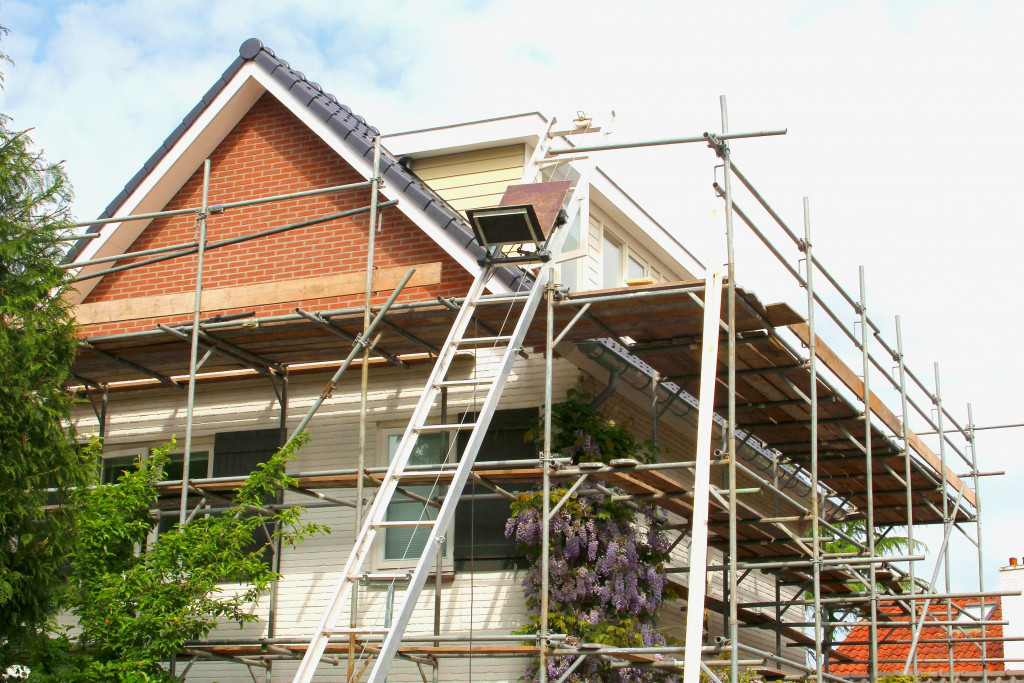- Storms can cause extensive damage to homes, leading to physical, water, and mold damage.
- The safety of family members should be ensured first before assessing damages or contacting insurance agents.
- Taking pictures and documenting damages is essential for making an insurance claim and navigating the claim process.
- Repairing a home after storm damage ensures occupants’ safety, prevents further damage, and enhances the property’s value.
When a storm hits, it can cause significant damage to a home. From power outages to fallen trees, the impact can be devastating. In fact, according to the National Oceanic and Atmospheric Administration (NOAA), severe thunderstorms alone cause an average of $5 billion in damages each year in the United States.
Not only can a storm cause physical damage, but it can also lead to water damage and mold growth if not adequately addressed. The Insurance Information Institute (III) reports that water damage and freezing account for almost 22% of all homeowner insurance claims, many resulting from storm-related issues such as leaking roofs or flooding.
In addition, storms can also lead to increased energy costs as homeowners turn to heat and air conditioning systems to combat extreme temperatures. According to the Department of Energy, heating and cooling account for almost half of a typical American household’s energy expenses.
So, what should you do if a storm damages your home? Here are a few steps to consider.
Ensure Family Safety First
The safety of family members is of utmost importance when a storm has inflicted damage on your home. This should be considered the first step toward recovery. Before assessing the extent of the damage or contacting insurance agents, take measures to ensure the safety of everyone in the household. Here are a few steps you can take to safeguard your family’s security:
Evacuate the Premises if Necessary
If the storm damage is extensive and risks your family’s safety, evacuate immediately. Please do not take any chances since severe damage can weaken the structure of your home and cause it to collapse. In such cases, moving to a shelter or safe location is better until you are sure it is safe to return.
Turn Off Electricity, Gas, and Water
If the damage has affected the electrical, gas, or water supply, turn off those services before attempting any clean-up operations. This will prevent further damage and ensure no one is injured due to exposed wires or gas leaks. If you are unsure how to turn off these services, contact a professional for assistance.
Examine Your Home for Potential Hazards
Check your home for any hazards that could cause injury to your family. Look for broken glass, exposed nails, sharp objects, and other potential dangers the storm damage may have created. Cover any broken windows or openings with tarps or other materials to prevent further damage.
Stay Informed
Stay informed about the weather conditions and updates provided by local authorities. Keep an eye on weather alerts and warnings, and listen to news broadcasts so that you can respond quickly if another storm is heading your way. Follow instructions from government agencies and prepare for the worst-case scenario.
Take Pictures for Insurance

Assessing the extent of damage to your home is essential to making an insurance claim. By accurately gauging the damage, you can provide your insurer with the necessary information to determine the payout you’ll receive to help pay for repairs.
You’ll need to document the damage and collect evidence to provide to your insurance company. This evidence may include photographs of the damage, receipts for any materials or services required for repairs, and documentation indicating the extent of the damage.
In addition to the need for an accurate assessment of damages, insurance companies often have specific requirements for making a claim. For example, depending on the type of insurance policy, you may need to take action within a particular timeframe, or the company may require you to use certain contractors for repairs. By having clear and comprehensive damage documentation, you can better navigate your insurance claim process and ensure you receive the payout you’re entitled to.
Repair Your Home

After a storm damages a home, repair is necessary to ensure safety and prevent further damage. A damaged roof, for example, can allow water to enter and cause mold growth, which can be hazardous to the health of occupants. Additionally, any structural damage can weaken the home’s foundation, making it more susceptible to future damage in the event of another storm.
Post-storm repairs should be done immediately to prevent further harm to the household’s occupants and property. If you feel overwhelmed or unsure of what steps to take in the recovery process, seeking help from a professional is the best course of action. For instance, professional storm damage contractors are experienced in repairing homes after storm damage and identifying additional damaged areas you may have overlooked.
Furthermore, repairing the home following storm damage also enhances its value. A home that has undergone repairs will likely have a higher value than one with existing storm damages. This is particularly important should you decide to sell your property.
Final Thoughts
Storms can cause significant damage to homes, but with a few proactive steps, you can protect your property and reduce the extent of harm inflicted. By ensuring family safety first and following up with damage documentation and repairs, you can aim to restore your home quickly and efficiently.


